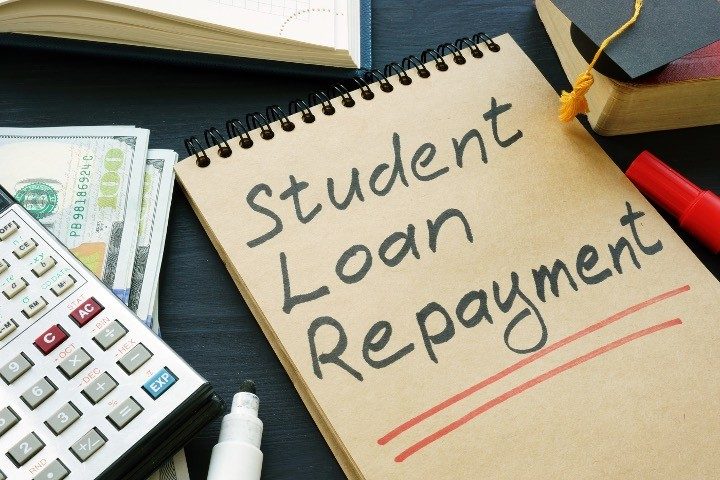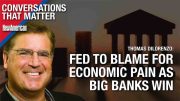
Economists are facing off in strong dissent over President Biden’s plan to forgive up to $20,000 per student in student loan debt. Biden’s economic team is in disagreement with independent analysts and veterans of previous Democratic administrations over the plan’s cost to taxpayers and Biden’s claim that the plan is already “paid for.”
Last Wednesday, Biden announced his Student Debt Relief Plan, which cancels student loan debt of up to $20,000 for millions of eligible borrowers. The plan forgives up to $10,000 in loans for individuals earning $125,000 or less, and an additional $10,000 for borrowers from low-income backgrounds who received Pell Grants in college. Also included in the plan are proposed changes to loan repayment plans going forward that will reduce monthly costs and eliminate interest accumulation to assist lower-earning borrowers who maintain payments. All of this is estimated to cost the taxpayers over $600 billion.
As expected, criticism of the plan has come from Republicans and conservative economists. But even socialists who normally wouldn’t even blink an eye are questioning Biden’s plan, one that will most likely fuel higher inflation.
Jason Furman, the former chairman of Obama’s Council of Economic Advisors, tweeted, “Pouring roughly half trillion dollars of gasoline on the inflationary fire that is already burning is reckless. Doing it while going well beyond one campaign promise ($10K of student loan relief) and breaking another (all proposals paid for) is even worse.”
Adding his disapproval of the plan, Lawrence Summers, a Charles W. Eliot University professor and president emeritus, called the student loan relief proposal “unreasonably generous.”
Summers, who was secretary of the treasury under President Bill Clinton, tweeted, “Every dollar spent on student loan relief is a dollar that could have gone to support those who don’t get the opportunity to go to college,” adding, “Student loan debt relief is spending that raises demand and increases inflation. It consumes resources that could be better used helping those who did not, for whatever reason, have the chance to attend college.”
It is estimated that 45 million Americans owe a combined $1.7 trillion in federal student loan debt, as Forbes reported in June. Some economists believe loan forgiveness could ease inflation by allowing borrowers to spend money that would otherwise go to their loans. Other economists, such as Arthur Laffer, who served on the Economic Policy Advisory Board under the Reagan administration, disagree. Laffer said Biden’s proposal is a lose-lose for inflation.
“Of course, it will clearly worsen [inflation],” Laffer told Newsweek:
“Inflation is really too much money chasing too few goods. There’s more to it, but that’s a good first step. [Forgiving student loans] will reduce the number of goods, which is inflationary. It will increase the size of the monetary base, which is also inflationary. The two together, I don’t know how much it will contribute [to inflation], but it’s not a trivial amount.”
Laffer estimated that if everyone who qualified received the $10,000, it would cost $440 billion in a $22 trillion economy, or roughly 2 percent. Laffer said 2 percent constitutes a “big number” in economic spending. Laffer also argued that forgiving student loans could lead to less people in an already-scarce labor market.
Not knowing what share of eligible borrowers will go through the process to request debt cancellation or how many people would actually have paid back their full balance if this program were not instituted, the true cost to taxpayers is difficult to estimate. The Committee for a Responsible Federal Budget calculates the budget impact at somewhere between $440 billion and $600 billion over a decade. And the University of Pennsylvania’s Penn Wharton Budget Model estimates $605 billion under strict “static” assumptions over 10 years.
The White House claims an official estimate of the plan’s costs won’t be available until winter at the earliest. The White House budget office estimates that one part of the program, the debt relief of up to $20,000 per borrower, will reduce loan payments to the government by $24 billion a year over the next decade, assuming three-quarters of borrowers opt into the program.
In an attempt to spin a positive message on the estimated cost of the plan, administration officials have claimed the plan is “paid for” because the federal deficit is set to shrink by at least $1.7 trillion this year compared with last year.
“It is paid for and far more by the amount of deficit reduction that we’re already on track for this year,” Bharat Ramamurti, deputy director of the National Economic Council, told reporters on Friday.
A deficit reduction does not actually equate to “paying” for anything. But, for politicians and “zero percent” inflation Biden, it is their desperate attempt to gain a positive reaction from the electorate before the midterms.




